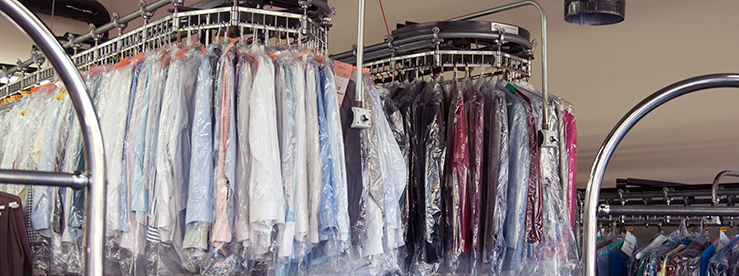OUR PROCESS


John Mattioli says being an entrepreneur has far exceeded his expectations. 




Archives
- August 2018
- October 2017
- September 2017
- June 2017
- February 2017
- July 2016
- June 2016
- May 2016
- March 2016
- February 2016
- January 2016
- November 2015
Categories
Clothing Moths Birmingham
Here at Dry Clean City of Vestavia Hills, we post garment care information that may be of interest to our customers. Today’s post is about clothing moths.
Clothes Moth Inspection
You should make a thorough inspection of infested premises to find all sources of infestation before making any attempt at control. It is important to remember that adults of these insects do not feed on woolens or on any of the other materials which may be attacked by the larvae. The presence of adults in an area does not necessarily mean that larvae are in the same area, since the adults may have already laid their eggs in some other room and may be moving around at random or orienting towards bright sunlight shining through windows (they will want to disperse to outdoor areas).
Clothes moth and carpet beetle larvae prefer to feed in secluded and protected places. When searching for them, a good flashlight and a knife, nail file or small spatula are essential tools. Larvae will usually be found in dark clothes closets, on furs, woolens, hair padding, bits of carpeting, or other such materials in storage. They are also found in lint, especially under baseboards and around door casings, under the edges of carpeting, in and under upholstered furniture, in collections of animal hair, in air ducts, occasionally in cereals in the kitchen or pantry, and anywhere else where suitable food material might be available. When inspecting for carpet beetle larvae, be especially careful to examine under baseboards, around the bottoms of door casings, under the edges of carpeting, and in closets. Use the knife blade or other implement to bring out bits of lint which are usually found in these areas, and examine them closely for live larvae or their cast skins. Cast skins are sometimes more numerous than live larvae, but they resemble live larvae so closely that they can be used for identification purposes. Use a flashlight when examining dark closets and other such places.
In addition to the above-mentioned sources, it is very important that certain natural sources of infestation be considered. Look for articles of woolen clothing which may have been stored and neglected, and check the premises for old furniture and rugs which may be a source of continuing infestation. Other important reservoirs which are often overlooked include sites which represent the natural habitat of these insects. Sparrow, starling, or other bird nests, inside or outside of the premises, are common points of origin (or continuation) for fabric pest infestations. Wasp nests which are found under eaves and in attics are also common sources of carpet beetle and clothes moth infestations. Moth or beetle larvae feed upon the remainders of dead insects fed to the wasp larvae, on cast wasp larval skins and sometimes upon the living wasp larvae. Another important reservoir of food material for carpet beetle and clothes moth larvae is accumulations of animal hair which may be found quite often in homes where pets are kept. Shed hair may accumulate in heating ducts, beneath furniture, or in hard-to-clean corners. These loose tangles of hair may be sufficient to sustain a small population of fabric pests for a long period of time, even in places where all wool products might have been treated.
Clothes moth and carpet fabric pest detection requires a thorough knowledge of pest biology and behavior. Observation can also be a source of useful information, as you will know where pet foods, mounted animal specimens, insect collections, skins, furs, woolens, seeds, organic fertilizers (e.g., bone meals) and other items likely to be infested are stored. They may also know if there are bird nests under eaves or in the attic, or if there are any wasp or hornet nests around.
Clothes Moth Sanitation and Prevention
Preventive measures should be practiced whenever possible, because once a “hole” is made the damage is done and may not be repairable. Preventive procedures include preventive sanitation and related chemical measures, and protection by mothproofing of garments or fabrics. Much can be done to prevent fabric pest problems by means of household cleanliness, including thorough and frequent cleaning of carpeting and upholstery with a vacuum cleaner, and brushing, airing, and dry cleaning of susceptible clothing or other articles. Avoid prolonged storage of discarded garments, bedding, any fur or animal pelts (unprotected taxidermy) and old wool rugs or furniture upholstered with vulnerable fabrics. Remember that a clean environment is not conducive to activity of fabric-destroying insects. It is not absolutely necessary that the item itself support fabric insect development. Soiled articles of otherwise indigestible materials can be attacked, or garments of wool blend fabrics can be attacked. In all moth and carpet beetle control work, it is essential to eliminate as many potential breeding places as possible. Old pieces of woolen fabric, cut off pieces of carpeting, old feather pillows, dried flower arrangements or “shadow boxes” (with caches of seeds in them) and other such sources of fabric insect food should be destroyed. Areas under baseboards, behind door casings, under heat radiators, and inside furnace or air conditioning registers should be thoroughly cleaned with a vacuum cleaner to remove as much lint as possible. A vacuum cleaner with strong suction is a good piece of special equipment to use. Careful, routine attention to such sanitation procedures, will be very beneficial toward limiting fabric insect problems.
Several preventive approaches can be used in close association with these sanitation procedures. The most commonly recommended chemical for preventive control in storage situations is Insect Guard which acts as a repellent and continuous fumigant. Stored woolens can be interspaced with Insect Guards, as the fabrics are packed into tightly sealed trunks or boxes. Use of tight containers such as large, sealed plastic bags, which are then kept in tight boxes or chests, is important toward obtaining optimum protection for the longest possible time. Remember that it is important to maintain the highest possible concentration of the Insect Guard vapors inside the plastic bag containing the susceptible items. Naphthalene (moth balls) are less desirable to use, and are also less effective. Cedar closets and most cedar chests are ineffective, primarily because a sufficiently tight seal is rarely maintained. Garment storage in cold vaults is an effective preventive measure, especially for very valuable furs or other susceptible garments.
Mothproofing For Clothes Moths
Mothproofing and clothes moth control are two different things. Mothproofing implies preventive applications of an insecticide to avoid infestation. Clothes moth or carpet beetle control is the correction of an existing infestation. Mothproofing is often accomplished by a special treatment during the manufacture of woolen fabric or other susceptible items. In some instances it is also a service of a dry cleaning company.
Various mothproofers will give protection from moth and carpet beetle damage. These chemicals depend for their action on killing larvae either after light feeding or brief contact (before feeding occurs). Many fabrics which are treated with a mothproofing solution at the time of manufacture are safe from damage until the chemicals are removed, either by washing, dry cleaning or simple degradation. You should never attempt to mothproof articles of clothing. When you desire to have clothing treated, it is usually best that treatment be made during dry cleaning if such treatment is available in your area. Such mothproofing of clothing is usually quite effective over the length of time between cleanings, or for storage during the summer months.
We Are Easy On The Environment & On Your Wallet!
www.inthehamper.com





